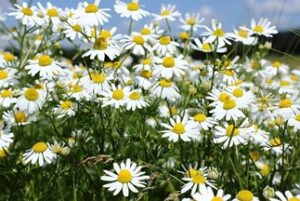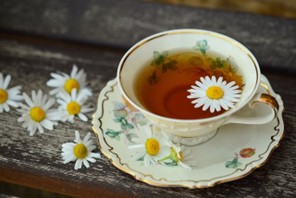January 2025, Herb of the Year

Happy New Year! My New Year’s resolution is to do better writing a monthly blog. Apologies for stepping away from my writing in the later part of 2024. Running a wholesale nursery business takes a lot of time and energy and I often get pulled in many different directions. The focus for 2025 will be to highlight an herb, perennial, vegetable or other plant we are growing.
I will begin this blog with the Herb of the Year, Chamomile. Every year the International Herb Association selects an herb to feature that meets at least 2 criteria- Culinary, Medicinal or Decorative. Although technically not related, the 2 most common Chamomiles share many mutual characteristics: small, daisy like flowers, an apple like fragrance and thick, green, feathery foliage. Dried flowers are mainly used to make relaxing, soothing tea.
Remember the story of Peter Rabbit, whose mother gave him Chamomile tea to settle his upset stomach after eating too much of farmer McGregor’s garden. In addition, tea is used for a variety of digestive ailments from nausea to colic. The essential oil from the flowers is used in aromatherapy to treat congestion and in shampoo, hair rinses for blonde, gray or white hair.
The annual German Chamomile (Matircaria recutita) is the taller plant, reaching 3-4 feet and likes a mostly sunny, semi-dry soil. It will produce an abundance of flowers to harvest and dry for tea or to use in cream sauces. A good edible flower for use in any drink or any sauce, pastry or garnish.
The perennial Roman Chamomile (Chamaemelum nobile) grows low to the ground and sometimes it will re-seed. In England it is often used as a low growing lawn alternative. Harsh Texas summers usually limit its ability to survive and will require more moisture. Best to plant under a deciduous tree in fall or early spring where it can take full winter sun. By the time the temperature starts to warm the leaves on the tree can provide dappled light to keep it cool.
A lesser known but historic variety, is Dyer’s Chamomile (Anthemis tinctgoria) This upright perennial yields numerous solid yellow flowers. It was used as a natural dye for rug making in Turkey in the past.
So while the weather is still acting like winter, sit back with a hot cup of Chamomile tea and look at seed catalogs and plan your spring garden, Until next time, Happy Gardening!
-Cathy

